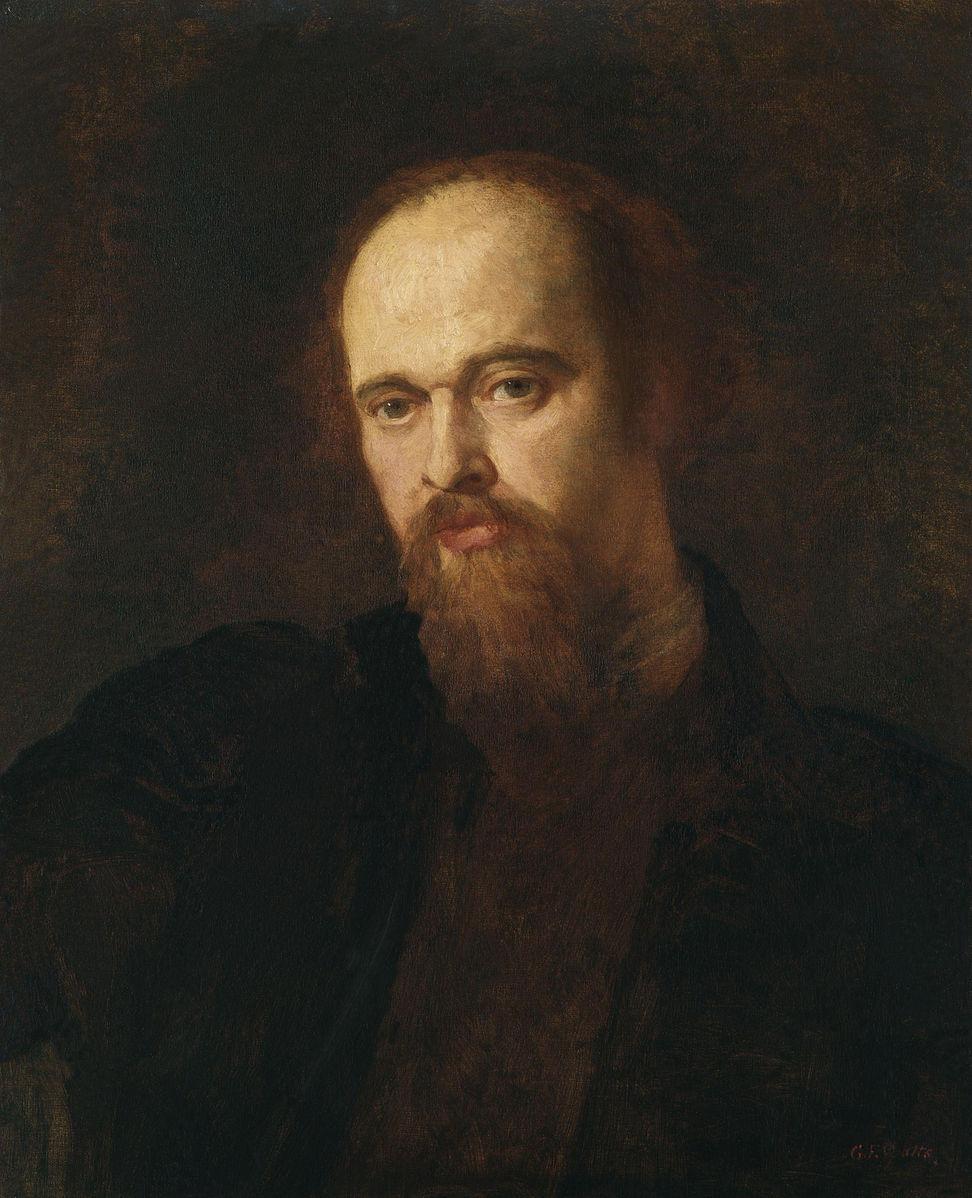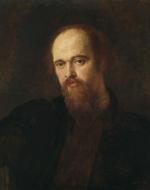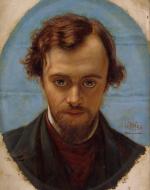Created by Dhruvi Soni on Sun, 10/25/2020 - 00:49
Description:
Gabriel Charles Dante Rossetti was born in London on May 12th, 1828. (Ash 7) His father, Gabriele Rossetti, was obsessed with Dante Alighieri, so he gave his first-born son the name of Dante. (Ash 7) Rossetti realized his passion for poetry and painting early in his life, so he decided to pursue both. His decision was fully supported by his parents, which was liberal for the Victorian Era. (Ash 7) In order to study the arts, he went to Sass's, a preparatory school for Royal Academy. (Ash 7) He went to the Royal Academy in 1845, and he left before his twentieth birthday. (Ash 9) He studied under Ford Madox Brown, a well-known painter. (Preetejohn 9) One day, Rossetti saw William Holman Hunt's painting of The Eve of St. Agnes. (Ash 11) Rossetti reached out to Hunt for a friendship, and the idea of the Pre-Raphaelite Brotherhood began.
The philosophy was based on Rossetti's approach to art. His art approach was considered avant-garde in the Victorian Era because he did not follow the Royal Academy's approach to art, which was prevalent in England. The Royal Academy was an influential art institution whose ideas were based on Victorian rules of propriety and bourgeois morality. (Calloway 13) Rossetti sought to create a new ideal of beauty that was natural and real. He was inspired by medieval Italian art. William Holman Hunt and John Everett Millais, who shared Rossetti's views on art, created the Pre-Raphaelite Brotherhood in 1848. The Pre-Raphaelite Brotherhood was a secret antiestablishment art society, but they published their ideology in the Germ's publication. (Sizeranne 77)
The Pre-Raphaelite Brotherhood was focused on creating art based on traditional scriptural subjects in medieval art style. (Sussman 7) For example, Rossetti's watercolor painting The Annunciation in 1850 was of Virgin Mary when Angel Gabriel approached her. (Prettejohn) Rossetti also painted numerous paintings of Elizabeth Siddal, who was his muse. (Prettejohn) Over time, the Brotherhood eventually separated to go their individual ways by 1853. (Sussman 7) However, the Pre-Raphaelite movement did not end with the separation of the Pre-Raphaelite Brotherhood.
Rossetti formed the Pre-Raphaelite Circle shortly after the division of the Brotherhood in the late 1850s. The Pre-Raphaelite Circle was the second generation of Pre-Raphaelites, and the members of the circle were William Morris, A.C. Swinburne, Edward Burnes-Jones, and John William Waterhouse. (Prettejohn) The Pre-Raphaelite Circle differed from their predecessors in terms of style and subject. (Sussman 7) The style of the circle became secular, and the subjects were not scriptural. (Sussman 9) The second generation of Pre-Raphaelites rejected the art generated by the Brotherhood because they wanted to restore the tradition of sacred art in England. (Sussman 9) As a result, the circle became an opposition to the original Pre-Raphaelite Brotherhood. They created avant-garde art that rejected middle-class values of the Brotherhood and instead focused on principles of aestheticism. (Sussman 9)
As a member of the Pre-Raphaelite Circle, Rossetti shifted his focus to creating paintings of sensual women for the aesthetic principle of "art for art's sake". (Ash 16) His work in the circle was based on the Italian High Renaissance instead of medievalism. (Prettejohn) Elizabeth Siddall stayed Rossetti's muse for numerous paintings in the late 1850s and early 1860s. (Prettejohn) They even married in 1860. (Ash 11) In 1862, Siddall had overdosed and died, leaving Rossetti grief-stricken. (Prettejohn) Rossetti spent the last 20 years of his life tormented with guilt that he had not spent enough time with Siddal when she was alive. (Prettejohn) Rossetti's obsession with his late wife's death never disappeared, but he began to also obsess over Jane Morris. (Ash 15) Jane Morris was William Morris's wife, and she became Rossetti's next love. He painted numerous paintings of her like Proserpine and The Day Dream. (Prettejohn) Jane Morris eventually decided to end the relationship with Rossetti because of Rossetti's drug addiction and her children. (Ash 16) Shortly after, Rossetti died in 1882. (Ash 16)
The work of Rossetti was influential in the Victorian Era and beyond. Ironically, Rossetti is associated more with the aesthetics movement than the Pre-Raphaelite works because most of his Pre-Raphaelite works were created at the beginning of his career. (Prettejohn) Many individuals today mostly study Rossetti as a precursor to the Aesthetics Movement late 19th century because of his focus on the aesthetic principle of "art for art's sake" in his art. (Ash 16)
Image Citation:
Portrait of Dante Rossetti at 22 years old by William Holman Hunt, via wikimedia commons
Portrait of Dante Rossetti by George Fredric Watts in 1871, via wikimedia commons
Works Cited:
Ash, Russell., and Dante Gabriel Rossetti. Dante Gabriel Rossetti. Harry N. Abrams, 1995.
Calloway, Stephen, et al. The Cult of Beauty: the Aesthetic Movement, 1860-1900. V & A Publishing, 2011.
Prettejohn, Elizabeth. "The Painting of Dante Gabriel Rossetti." The Cambridge Companion to the Pre-Raphaelites, Cambridge University Press, 2012, pp. 103–15, doi:10.1017/CCOL9780521895156.009.
La Sizeranne, Robert de, and Andrew Miles Byrd. The Pre-Raphaelites . Parkstone International, 2012.
Sussman, Herbert. "The Pre-Raphaelite Brotherhood and Their Circle: The Formation of the Victorian Avant-Garde." The Victorian Newsletter, vol. 57, 1980, p. 7–.



